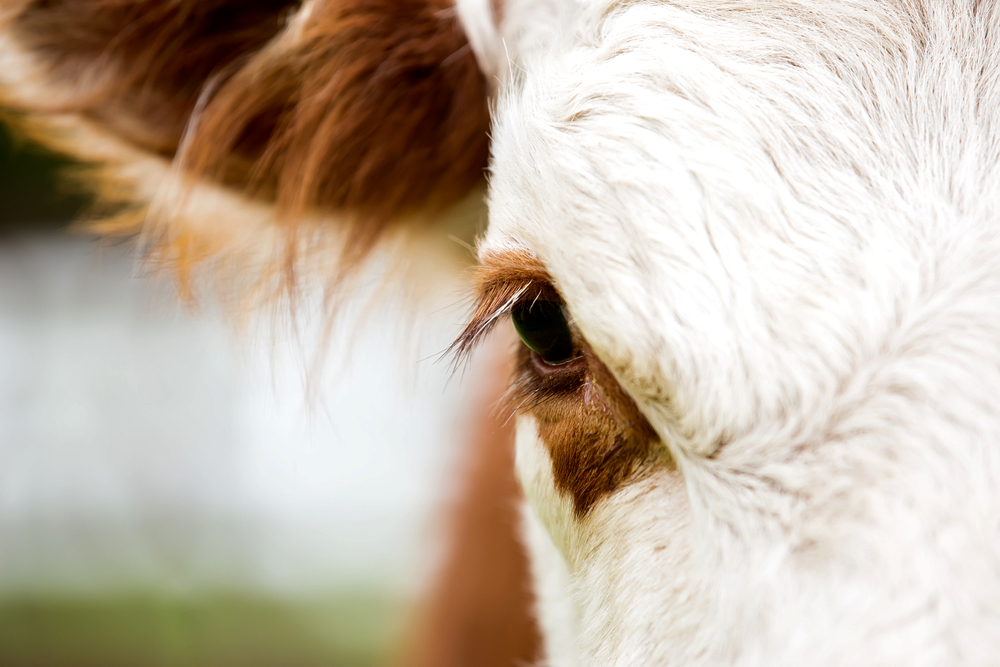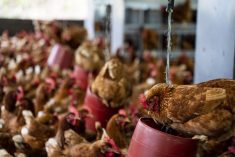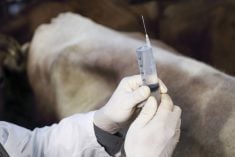Researchers say they’ve tried very hard to find a link between antibiotic-resistant bacteria in cattle and humans — but despite all their efforts, were unable to do it.

“We did a very comprehensive study where we studied enterococci in cattle, in waste water treatment plants, in catch basins and surrounding fields, and also collected isolates out of a Calgary hospital as well,” said Tim McAllister, principal research scientist with Agriculture and Agri-Food Canada’s Lethbridge centre.
Enterococci is a gram-positive bacteria that resides in the intestinal tract of both cattle and humans. It can become resistant to antibiotics and can be involved with urinary tract infections in humans, particularly in the elderly.
“It’s a fairly frequent organism that is responsible for antibiotic-resistant infections in hospitals,” said McAllister.
The research team, funded by the Beef Science cluster, looked at different species of enterococci in humans, cattle, and waste water. Enterococci were chosen because they can exhibit resistance to a class of antibiotics called macrolides.
“In beef cattle production, we use quite a few macrolide antibiotics,” said McAllister. “These are antibiotics like Micotil, Draxxin, and Tylosin. Bacteria can become resistant to those antibiotics. They’re a good indicator as to how much resistance is being developed as a result of the use of those antibiotics.”
Many of these antimicrobials are Category 1 or Category 2, which means they are classed as being of high or very high importance in human medicine. One of the main antibiotics used in this family is erythromycin, which is used for treating humans but not cattle.

“Administering those other macrolides can cause resistance to erythromycin as well,” said McAllister.
The team included researchers from the University of Guelph, the University of Calgary’s faculties of medicine and veterinary medicine, the Public Health Agency of Canada, Alberta Agriculture and Forestry, and Feedlot Health Management Services (a feedlot consultancy company). They collected samples during the course of 2017 from cattle, human medical facilities, catch basins, waste water treatment plants, surrounding fields, and sewage treatment plants in Calgary and Medicine Hat.
They isolated the enterococci and separated them into species. The main species that cause problems in humans are enterococcus faecalis and enterococcus faecium, said McAllister. Neither species were found in cattle. Instead, the cattle harboured enterococcus hirae, a completely different species.
Read Also

Canadian beekeepers call for regulatory accountability
Beekeepers say the Canadian Food Inspection Agency should restore U.S. packaged bee shipments, claiming the agency isn’t following evidence.
In terms of types of antibiotic resistant-bacteria, the researchers found entirely different species between humans and cattle.
Not out of the woods
That’s good news for the cattle sector — which is frequently targeted by critics who allege antimicrobial use in livestock increases the likelihood of bacteria that infect humans will become resistant to common drugs.
But even though the study didn’t find any evidence for that charge, the issue is still a major one for the livestock sector.
First, “if you’re using antibiotics, it doesn’t matter what environment you are in, eventually resistance will increase,” said McAllister.
Second, the type of resistance was similar.
“Basically, the major conclusion is that the type of resistance we’re seeing in cattle is the same as the type of resistance we’re seeing in humans,” said McAllister. “That level of resistance was highest at the site of the cattle, in the cattle feces, where the antimicrobials were administered. It became less in the catch basin, the standing water, and the field. If you move away from the point source of antimicrobial administration, the (incidence of) antimicrobial resistance decreases.”
This means a lot of the bacteria are surviving in the digestive tract, but they do not survive well in the outside environment. The same pattern was seen in the bacteria found in humans.
“Our data has shown that using antimicrobials in cattle does cause some bacteria to become resistant,” he said. “Those bacteria are not the same bacteria that cause infections in people for the most part. It’s not like we never isolated them. We did occasionally, but it was very rarely.”
Finally, McAllister said, the study’s findings don’t mean that antimicrobial resistance can never spread from bacteria in cattle to bacteria in humans.
“The problem is when you are dealing with a bacterial system, you can never say never,” he said. “You can talk about the risk, that the risk is low. You can never say the risk is zero. All it can take is one.”
The researchers also found that if cattle producers use antimicrobials in a careless manner, they can reduce the effectiveness of the antimicrobial to control disease.
“That can happen,” said McAllister. “But we have no evidence that this poses a serious health threat to humans. All the data that we’ve seen generated says that the problems of antimicrobials in humans comes from (use of) antimicrobials in humans.”
The team also found that removing antimicrobials from a system does not eliminate antibiotic resistance, either. A portion of the population will continue to maintain that resistance.
“If you lower the use of antimicrobials, you will lower the amount of resistant genes that are in the environment, but you don’t eliminate them,” he said.
The group has already written 15 scientific papers about the study, and expects to have about 25 to 30 by the time it is finished.
“I still see the need for prudent use of antimicrobials, to preserve the effects of them and to treat infections in the future,” said McAllister. “If we abuse or misuse those antimicrobials, we will lose our ability to control the infections.”
And don’t count on new ones coming along, he added, as pharmaceutical companies have little interest in developing new medications for animal health.
“If we don’t use these in a prudent manner, we could end up with nothing,” he said.
















